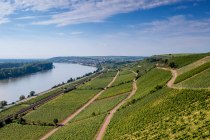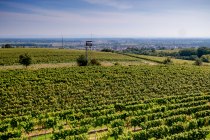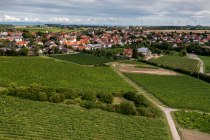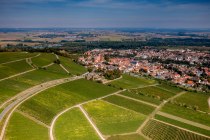Winery Manz
Authentic, exciting, dry Riesling and Pinots from top vineyards on the Rhine and the hills. Terroir characterized by limestone, Rotliegend, loess and old vines.
3 Stars Eichelmann, 3 Grapes Gault Millau, Gourmet 4,5 F, 2nd Place German Red wine price, 6 national honour prices, 19 state honour prices. DLG Top 100: 3rd place as the best winery in Rheinhessen, winemaker of the year, Riesling Champion 2017
Sauvignon Blanc from limestone, top cuvées from Cabernet & Co., Rheinhessen meets Mosel in Cuvée DUELL - the new brand for Germany. Pinot Noir of the extra class.
English speaking visitors are welcome.
























